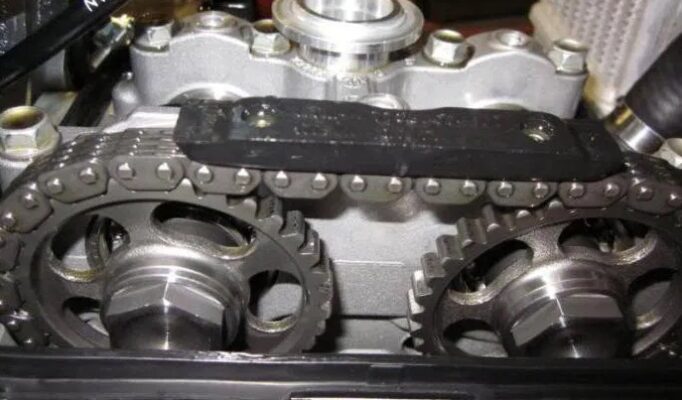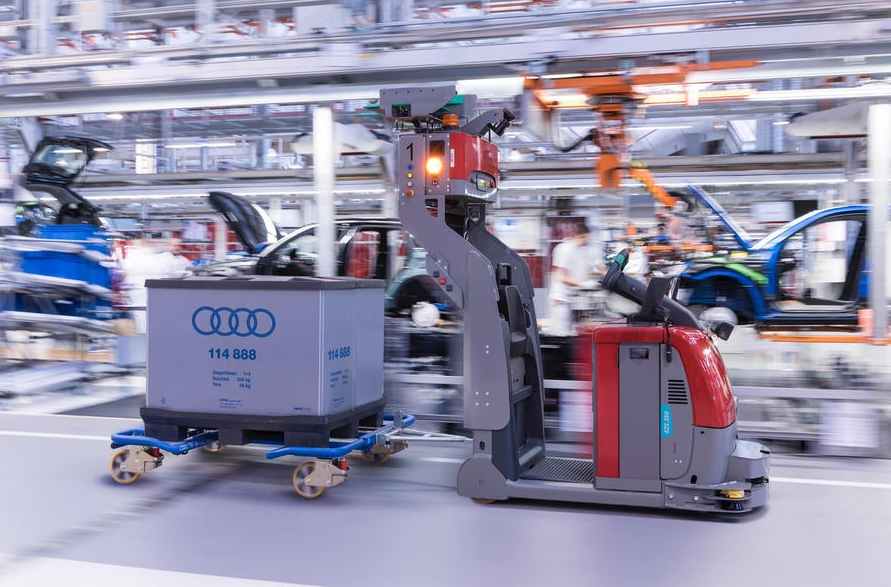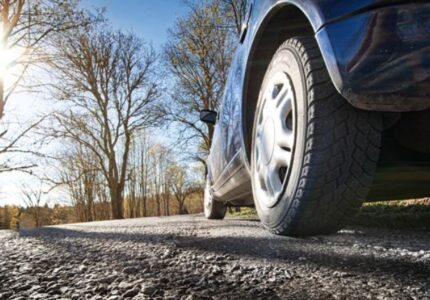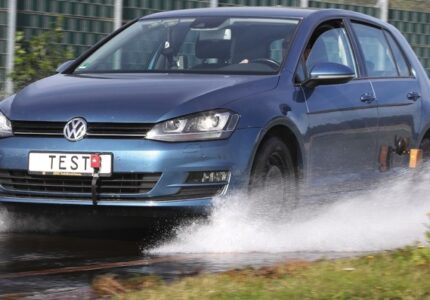First, let’s note the positive aspects of the chain drive:
- High resource (applies to old engines, where two and three rows of links are used).
- High resistance to external factors. The timing chain rotates in an enclosed space. She is not afraid of water, moisture, dust and temperature extremes. For belt drive, these factors can be critical.
- Accuracy of adjustment. Unlike a belt, timing marks can be more accurately set on the chain. This allows the camshaft to rotate with the required force.
- Fine tuning is a more rational control of the intake and exhaust valves. Accordingly, they do not burn out and do not coke, even as the links are stretched.
- Lubrication. The timing chain is constantly in oil. The belt runs dry. This significantly reduces its resource.
- Resistance to stress. The chain can handle high revs very well. With a working tensioner, it will not jump forward on the tooth, whatever the operating modes.
It would seem that this is the most technologically advanced transmission in the timing. But it’s worth considering the disadvantages.
About cons
The first factor is resource. It only applies to modern engines. For example, on Volkswagen cars with a 1.2 engine, the chain nurses no more than 50 thousand kilometers. This is less than that of a belt drive. The latter serves about 80 thousand. Plus, expensive repairs. You can change the belt yourself.
But removing the chain in the absence of experience will be extremely difficult. The next drawback is noise. Such units are an order of magnitude noisier, even when the chain is not stretched. The belt is made of rubber-fabric materials. It fits more gently on the pulley and works silently. Now about the hydraulic tensioners used in the chain drive. These parts are very demanding in terms of quality and oil level. If your engine eats up grease, it is worth checking the dipstick more often, otherwise the fluid will not enter the tensioner and the chain will jump to the tooth. The better the oil, the longer it will last.
Are there any conscientious manufacturers left?
Speaking of modern chain-driven motors, it is worth noting that not all manufacturers have switched to “lightweight” versions. Plastic chains are not installed on the engines of the popular Hyundai Solaris and its fellow Kia Rio. Even in the last generations.
It uses a double-link metal roller chain. Its resource ranges from 150 to 200 thousand kilometers. With a timely oil change, the chain will last longer.
Conclusion
So, we found out the features of both types of drive. It is rather difficult to answer the question “which is better – a timing chain or a belt”. You need to build on the design. If this is a classic 2- or 3-row chain with real, metal (not plastic) sprockets, this motor is definitely worth considering. When buying a car with a belt, remember that it can break in the engine as well (the latter does not apply to an internal combustion engine with a SOHC layout). This is fraught with costly repairs.
Which timing drive is better? This question is one of the ten most philosophical automotive questions, along with left and right hand drive, gasoline or diesel, manual or automatic transmission. Some motorists will give their vote for the belt drive, while the second will give preference to the chain mechanism. The same applies to all of the above issues. Let’s try together to figure out which gas distribution mechanism is better, cheaper, and what are the pros and cons of the two camshaft drive options.
It should be noted right away that today more and more automakers are switching to belt transmission and abandoning the timing chain. But still, some drivers still have a distrustful attitude towards the “elastic” drive. A large number of motorists, especially the older generation, call the metal option almost eternal. Are they right?






